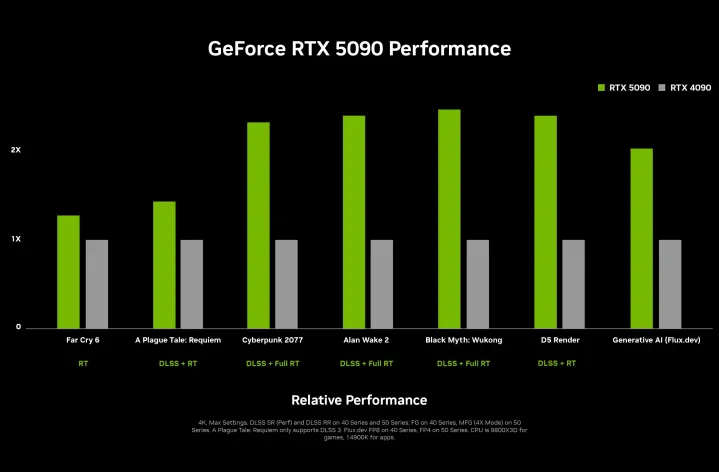
Part of me thought the rumors about Nvidia’s RTX 50-series GPUs were wrong. But the RTX 5090 is just as insane as everyone said it would be. Nvidia CEO Jensen Huang took to the stage at CES 2025 to officially kick off the show, announcing the RTX 5090, which clocks in at a staggering $2,000.
The monstrous graphics card has been the topic of rumors and speculation for well over a year. The entire range of Blackwell GPUs seemed to slipped out of a release late last year, as rumors up to that point had suggested. The RTX 5090 marks a $400 increase over the RTX 4090 we saw in the previous generation.

However, Nvidia lowered prices down the stack. The RTX 5080 clocks in at the same price as the RTX 4080 Super, while both the RTX 5070 Ti and RTX 5070 are $50 less than their last-gen counterparts. Nvidia says that the RTX 5070 provides performance on the level of an RTX 4090, which Huang attributed to the new GDDR7 memory, which will be available in all four GPUs.
For the flagship RTX 5090, Nvidia says it’s twice as fast as the RTX 4090, which you can see in the video above. Across a number of games, Nvidia shared performance estimates, which you can see below.

As rumors suggested, the RTX 5090 comes with 32G of GDDR7 memory, and it packs a power draw of 575 watts. Nvidia is still able to deliver that much wattage over a single 16-pin connector, which it has used in the previous two generations of graphics cards.
Further down the stack is the RTX 5080, which is much more tame by comparison. It comes with upgraded GDDR7 memory as well, but it sticks with 16GB, matching what was available on last-gen’s RTX 4080 Super.
Although the cards aren’t expected to arrive for at least a few months, Nvidia also revealed the RTX 5070 Ti and RTX 5070. Both use GDDR7 memory, with 16GB for the RTX 5070 Ti and 12GB for the RTX 5070. The memory is faster, but that’s the same capacity that was available on the RTX 4070 Super. Thankfully, I haven’t encountered a game where 12GB of VRAM is a serious issue yet.
As is the case with the flagship RTX 5090, Nvidia claims all of its new RTX 50-series GPUs are twice as fast as their last-gen counterparts. You can see the performance estimates Nvidia shared for the three additional cards above. All of the performance estimates Nvidia shared used Nvidia’s new DLSS 4, which includes multi-frame generation.
| RTX 5090 | RTX 5080 | RTX 5070 Ti | RTX 5070 | |
| CUDA Cores | 21,760 | 10,752 | 8,960 | 6,144 |
| AI TOPS | 3,352 | 1,801 | 1,406 | 988 |
| Boost clock | 2.41GHz | 2.62GHz | 2.45GHz | 2.51GHz |
| Base clock | 2.01GHz | 2.3GHz | 2.3GHz | 2.16GHz |
| Memory | 32GB GDDR7 | 16GB GDDR7 | 16GB GDDR7 | 12GB GDDR7 |
| Memory bus width | 512-bit | 256-bit | 256-bit | 192-bit |
| Total graphics power | 575W | 360W | 300W | 250W |
| Required system power | 1,000W | 850W | 750W | 650W |
Huang showed off a new design for Nvidia’s Founder’s Edition cards as well. Unlike the past two generations, the RTX 50-series design comes with two fans on one side of the graphics card, along with rounded corners and an angled 16-pin power connector. As is usually the case, Nvidia is working with several board partners for stock and overclocked models.
Nvidia is releasing Founder’s Edition designs for the RTX 5090, RTX 5080, and RTX 5070, but it won’t be release the design for the RTX 5070 Ti.

Nvidia says that the RTX 5090 and RTX 5080 will be available on January 30, while the RTX 5070 Ti and RTX 5070 will start rolling out in February. In addition to desktop GPUs, Nvidia revealed RTX 50-series mobile graphics cards, which are expected to arrive in March.








